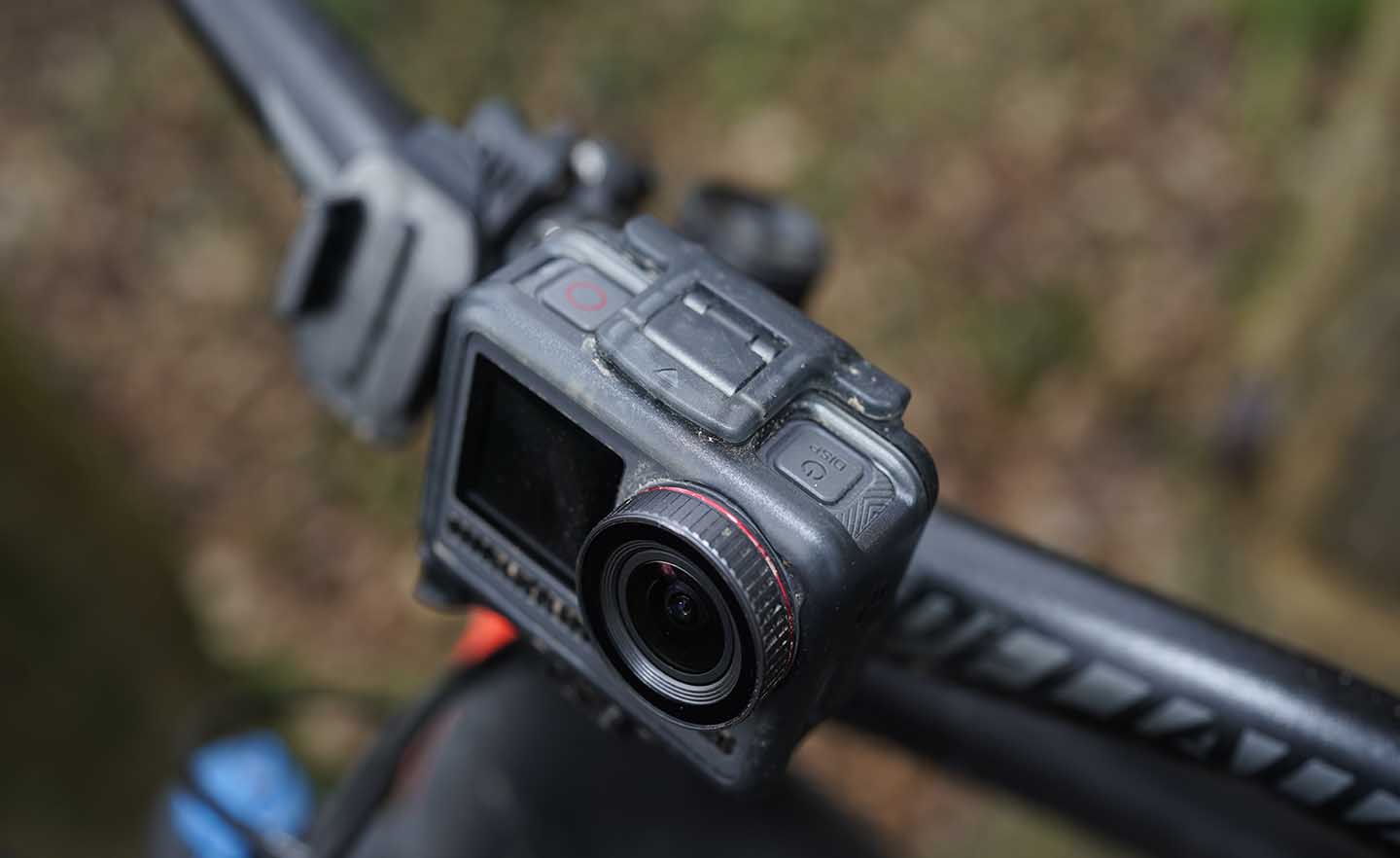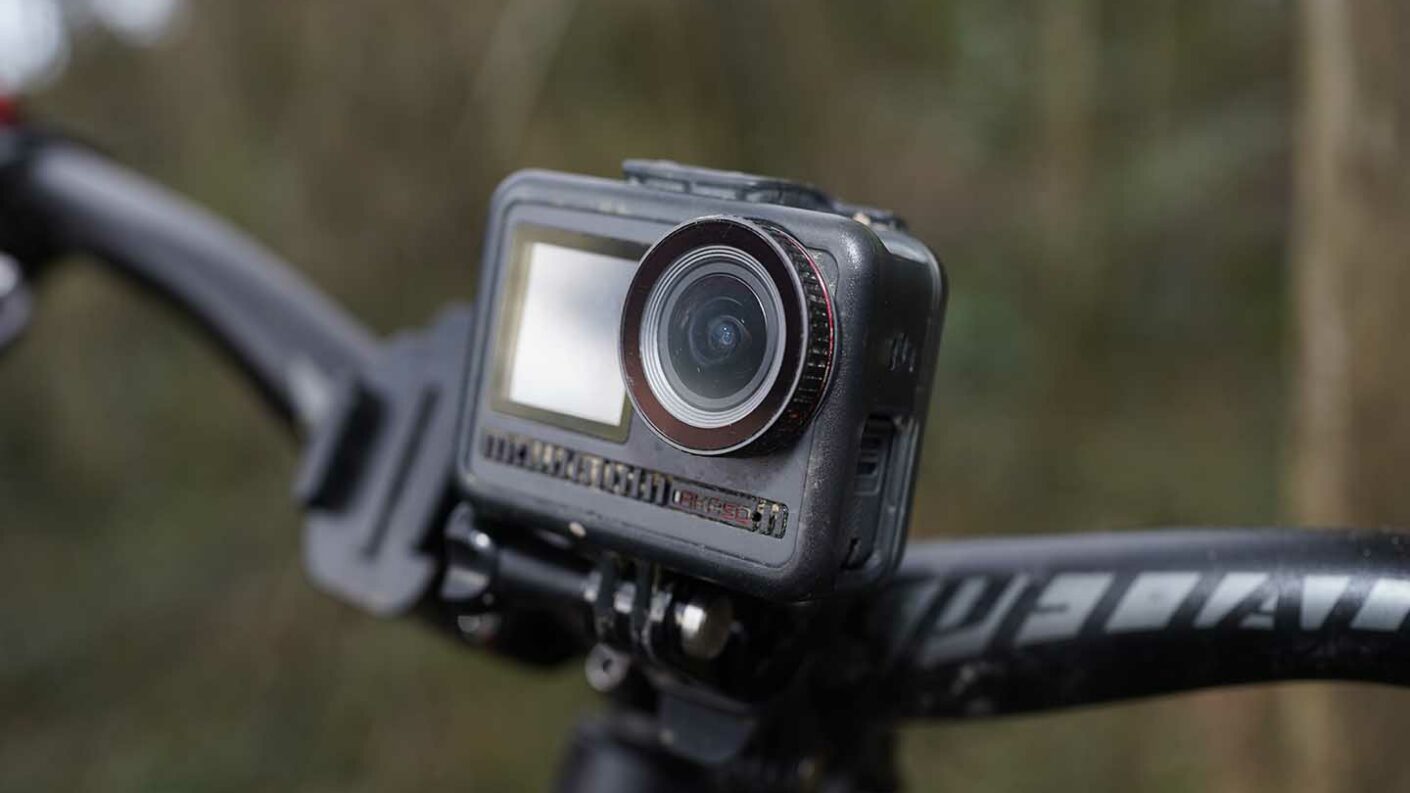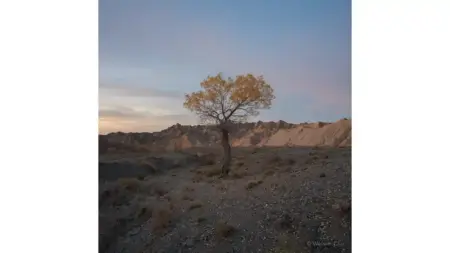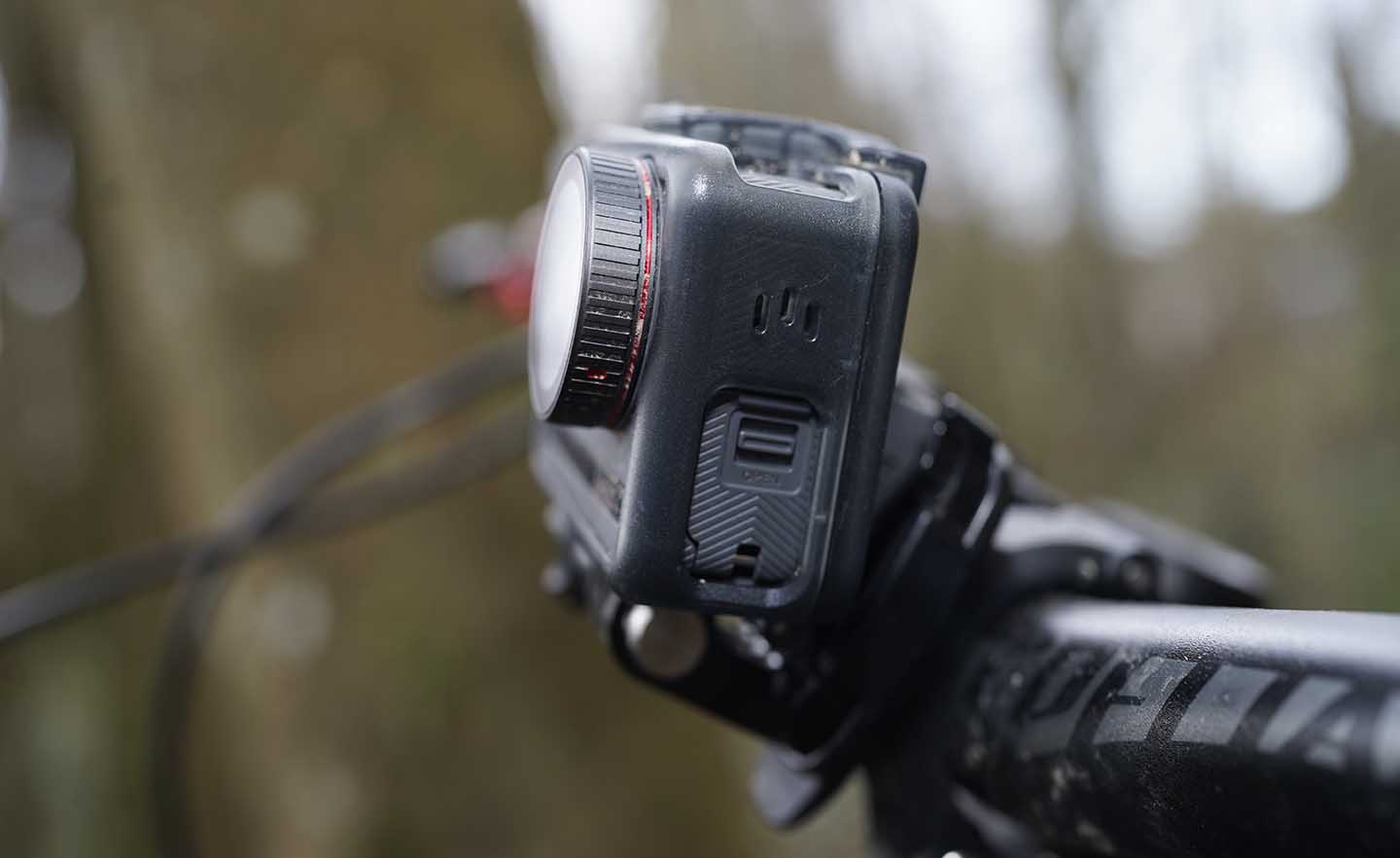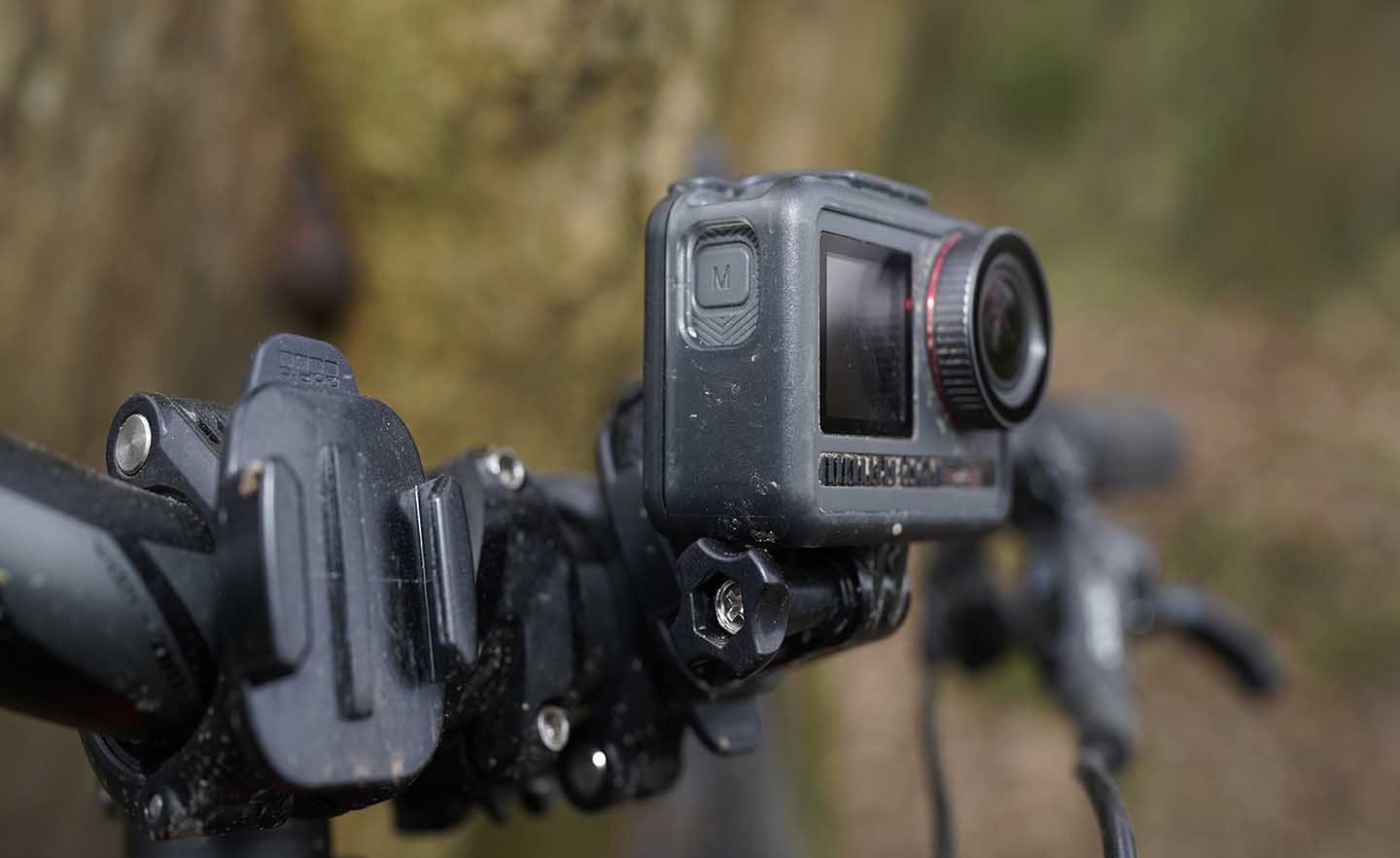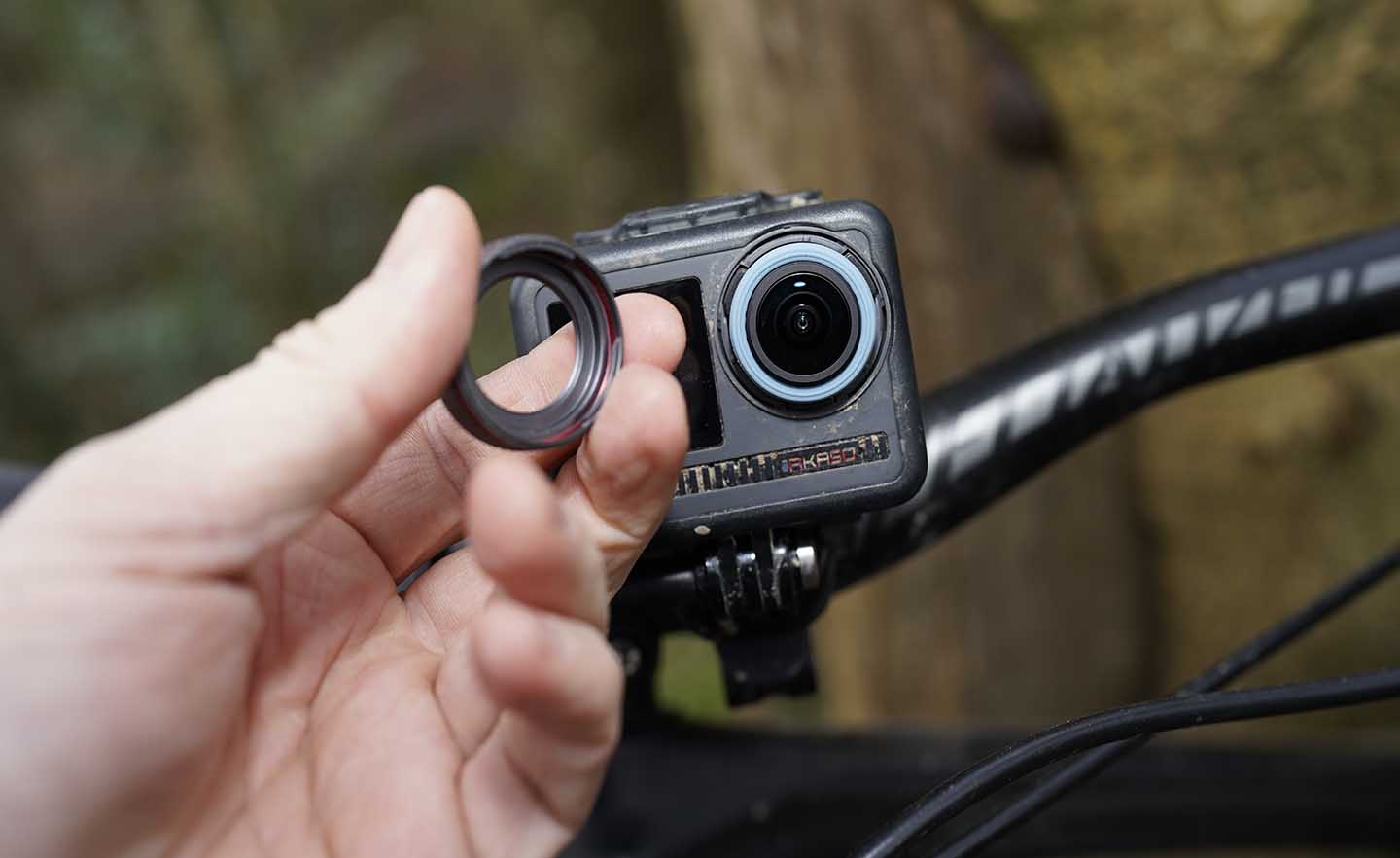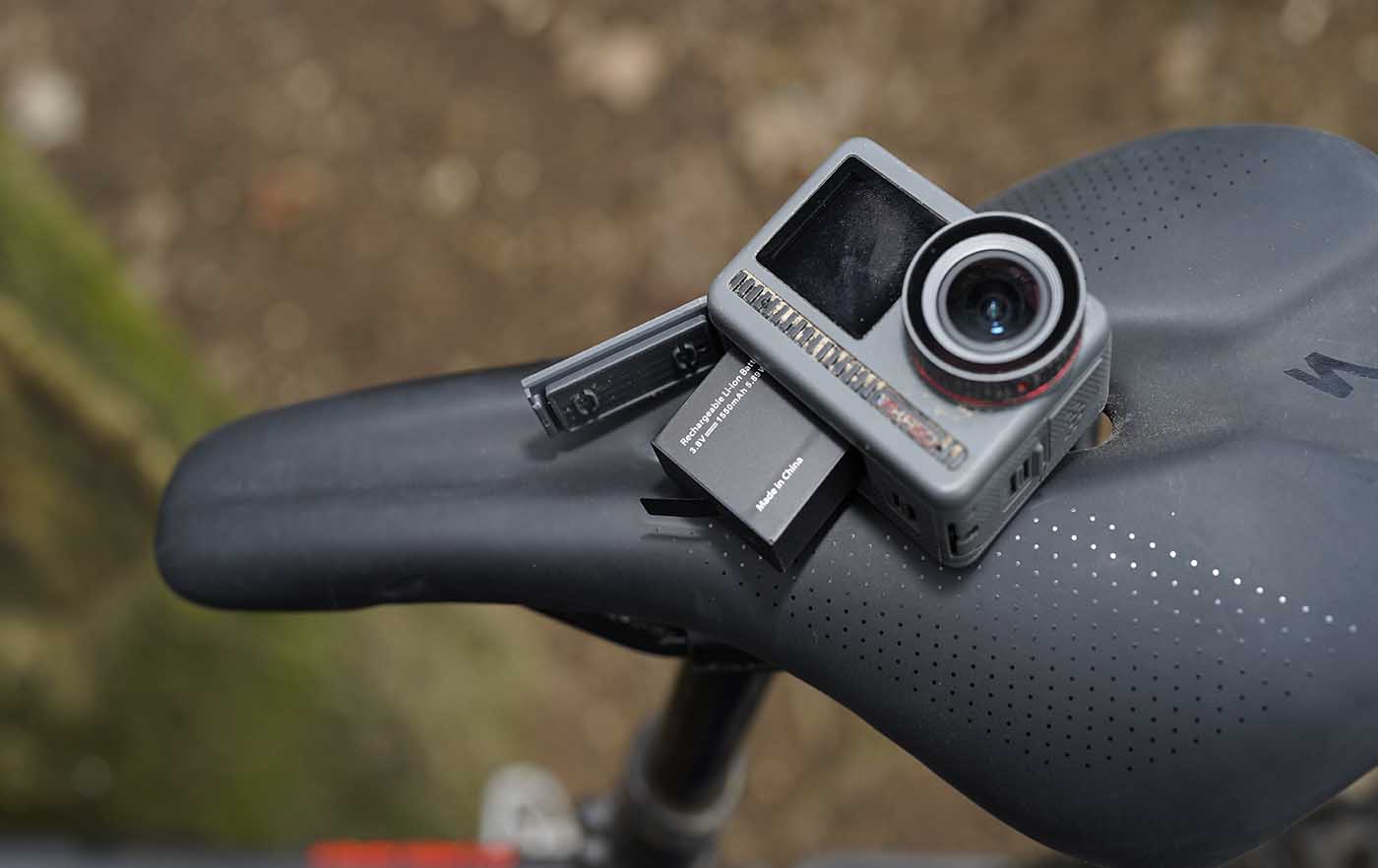I’ve decided to start with battery life; it’s an essential part of the review but usually doesn’t get covered in a great deal of detail. Battery life can vary greatly due to temperature, resolution, framerate and how much reviewing of footage and adjustment of settings I’m doing as I test the camera.
Here the AKASO lasted around an hour on average. This might not seem like a great deal of time, but for the price and the fact that I was swapping between settings, reviewing content and testing out the different features, this isn’t bad at all, not quite up to the battery life of the Insta360 ONE R or GoPro but on par with the DJI Action 2.
As ever, the battery is replaceable, and there’s two in the box along with a dual battery USB charger. In reality, that’s a day of filming and the fact that you can charge both batteries simultaneously is another big tick for the Brave 8.
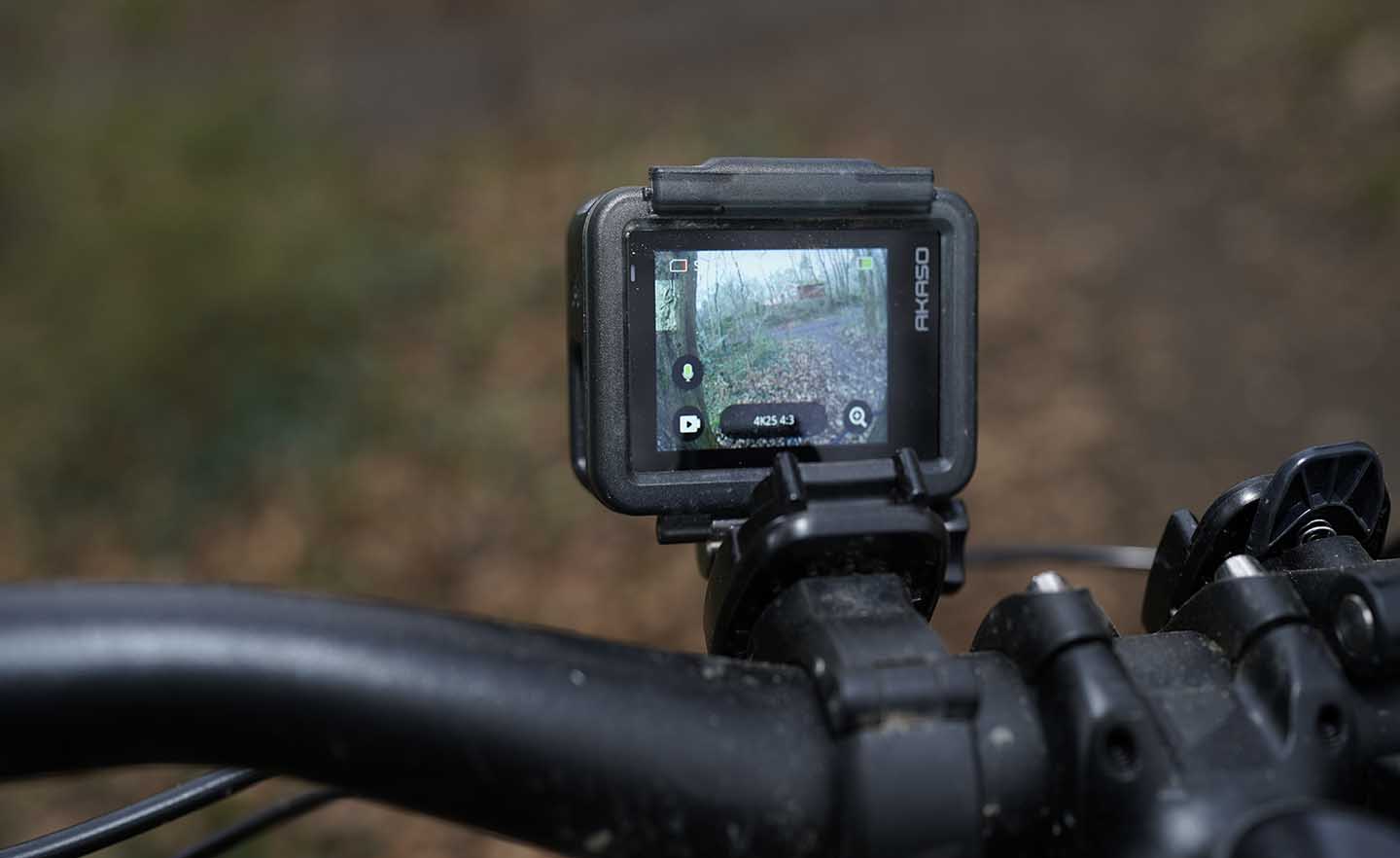
After a days ride, a trip to the beach despite the weather, and the usual treks through the forest, it was time to review the footage.
The first observation is that in bright sunlit conditions, the footage is excellent, full of detail, texture and tone. The motion of the 4K at 60fps is also superb, and looking closely at the footage, you can see how the SuperSmooth does kick in to help stabilise that footage with mixed results.
The SuperSmooth image stabilisation is OK for walking and general motion, but occasionally you’ll see a slight visual warp across the screen. This is something that I’ve often seen in other electronic stabilisation systems and something that marks out the GoPro, DJI and Insta360 cameras and their excellent EIS.
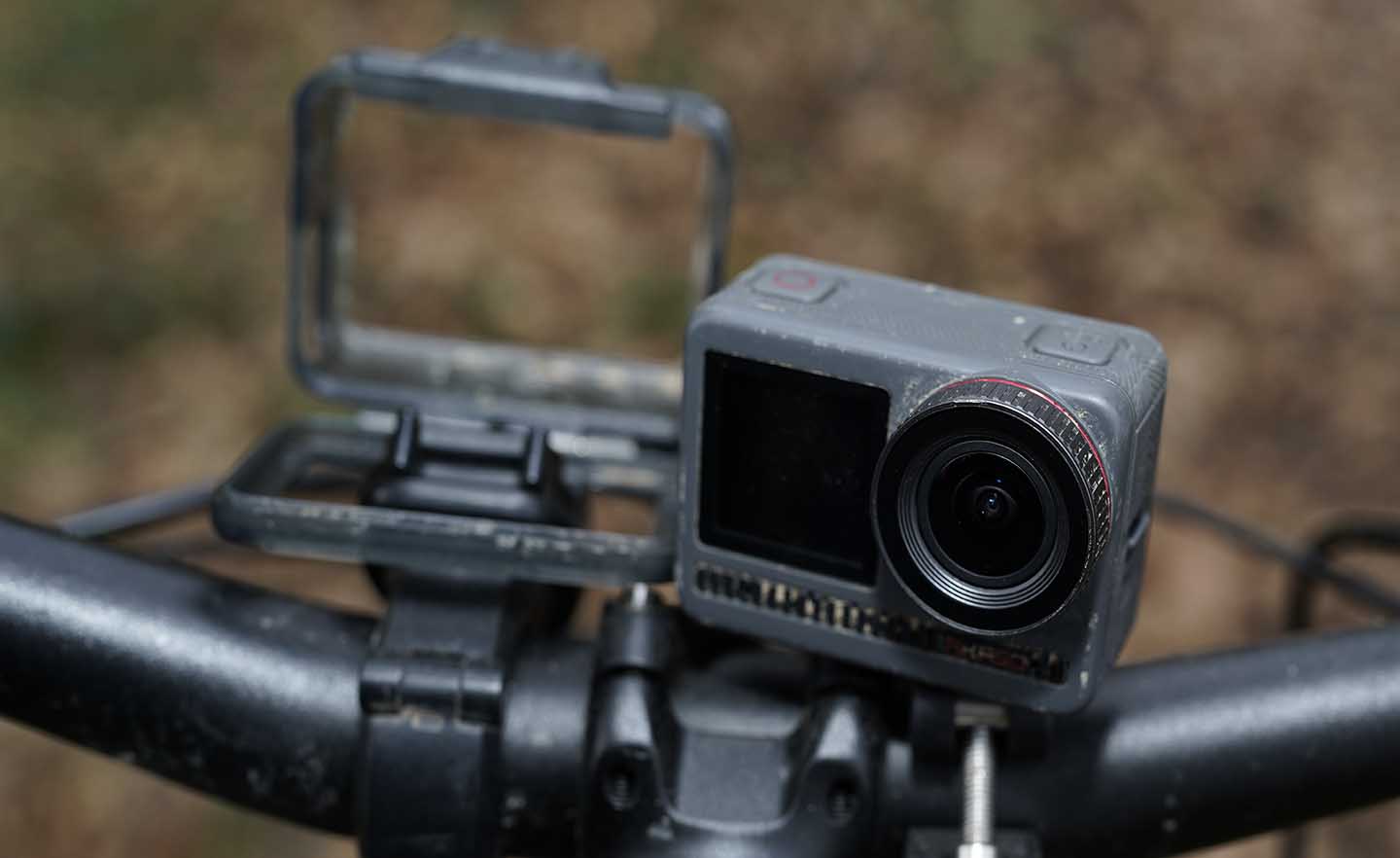
This warp becomes more pronounced the faster the action, so you need to make sure there is no mount vibration; otherwise, you’ll end up with some very strange effects.
On the whole, despite this slight warp for faster-paced video. The quality isn’t at all bad; in fact, it’s rather good, through all the framerates and resolutions. I’d go as far as to say that all resolutions and framerates are usable, and at this price, that’s unusual.
The usual caveat is that the faster the framerate and high the resolution, the more important light becomes. Filming at 60, 100, 200fps in the shade of the forest will produce slightly pixelated and undersaturated footage. This is just due to the sensor struggling to capture detail. However, break out into an open sunlit plain, and all will be OK.
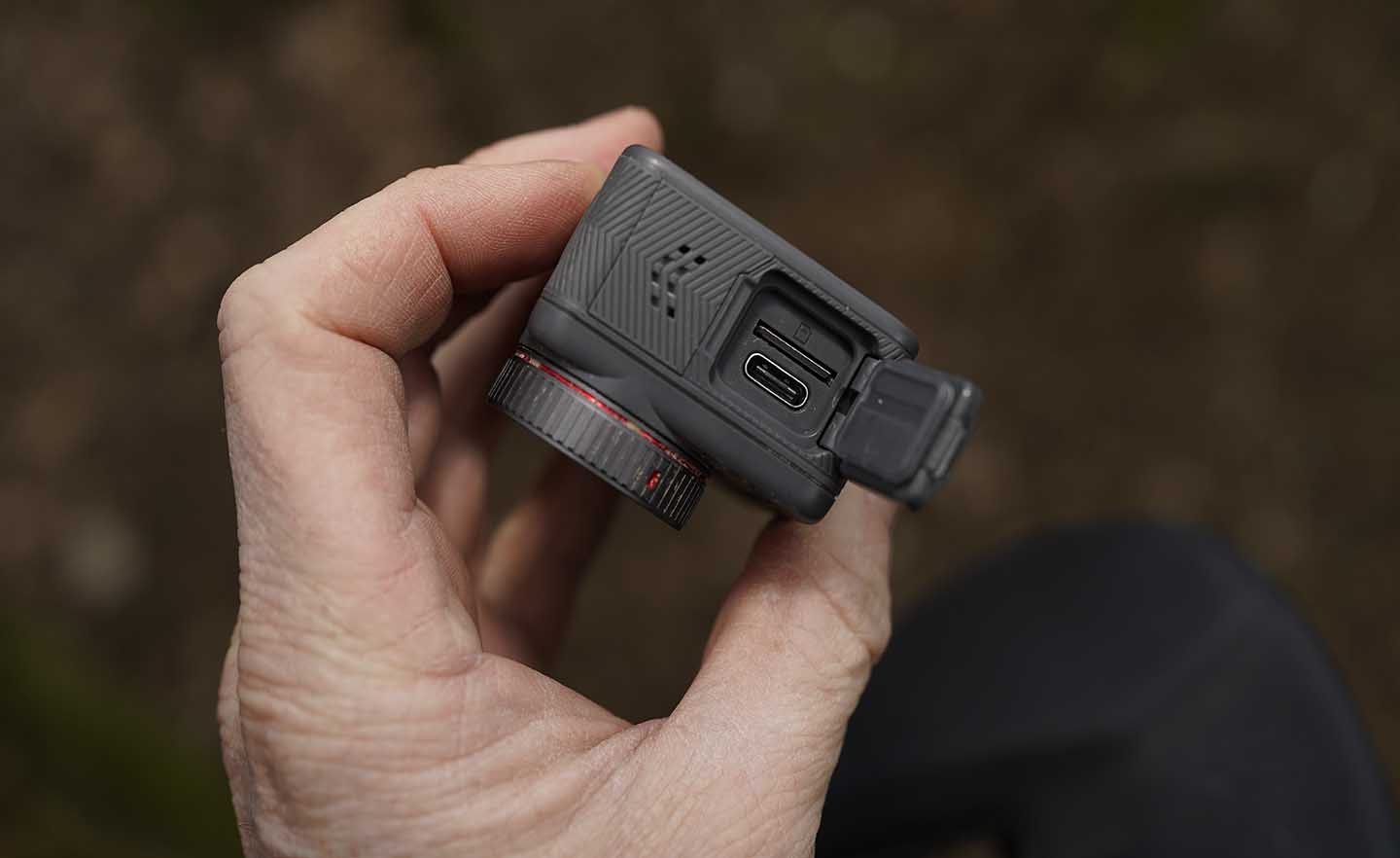
As with most action cameras, plenty of Californian style sun is required to make the most of the cameras full potential. At present, in the mid-British winter, that sun is just a dream.
Despite this, even with the limited daylight and plentiful overcast and rain-filled days, the camera performed well, producing good quality footage.
The flaws in the image stabilisation and the low light performance are minor, especially when considering the camera’s price, which is almost half that of the GoPro.
